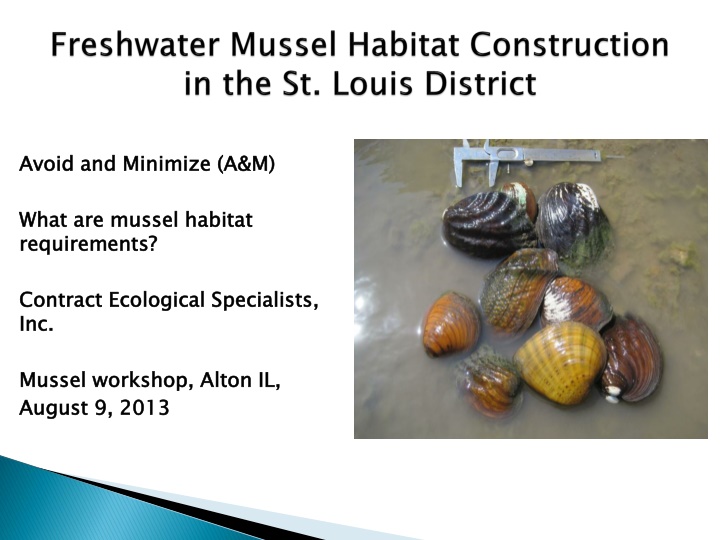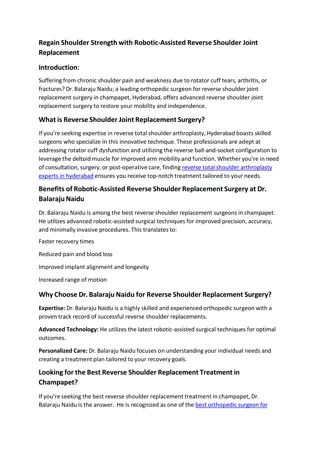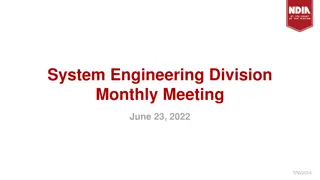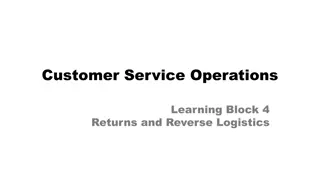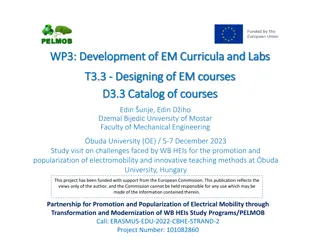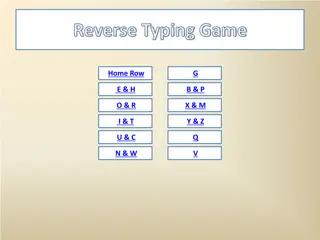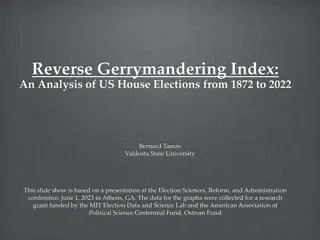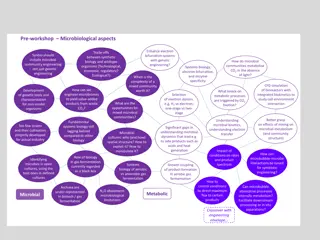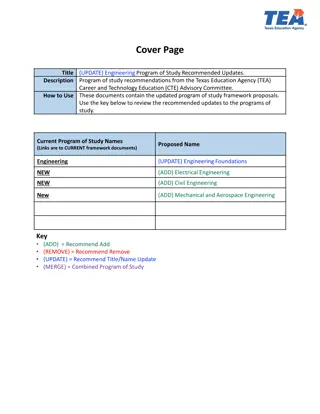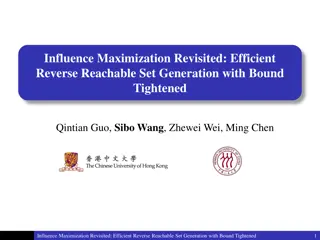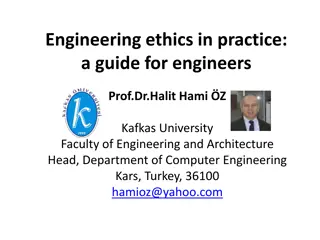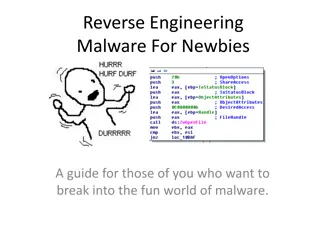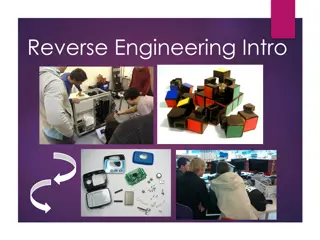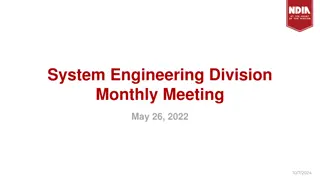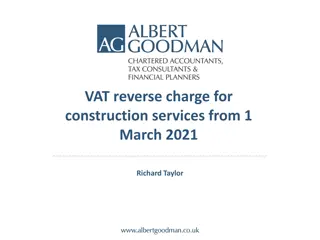Challenges in Reverse Engineering
Reverse engineering is a complex process that involves deciphering code, binary logic, and ambiguous representations. It poses difficulties such as loss of information, lack of variable/function names, and ambiguous code representations. The comparison between static and dynamic analysis sheds light on the time-consuming and error-prone nature of one versus the shallow understanding but faster results of the other. Examining x86 assembly and registers adds to the intricate nature of reverse engineering, providing insights into memory storage and variable handling.
Download Presentation

Please find below an Image/Link to download the presentation.
The content on the website is provided AS IS for your information and personal use only. It may not be sold, licensed, or shared on other websites without obtaining consent from the author.If you encounter any issues during the download, it is possible that the publisher has removed the file from their server.
You are allowed to download the files provided on this website for personal or commercial use, subject to the condition that they are used lawfully. All files are the property of their respective owners.
The content on the website is provided AS IS for your information and personal use only. It may not be sold, licensed, or shared on other websites without obtaining consent from the author.
E N D
Presentation Transcript
Avoid and Minimize (A&M) Avoid and Minimize (A&M) What are mussel habitat requirements? What are mussel habitat requirements? Contract Ecological Specialists, Inc. Contract Ecological Specialists, Inc. Mussel workshop, Alton IL, August 9, 2013 Mussel workshop, Alton IL, August 9, 2013
Aggregations (mussel beds) have higher density than surrounding area. Aggregations (mussel beds) have higher density than surrounding area. Healthy beds constrained to stable areas of the riverbed. Healthy beds constrained to stable areas of the riverbed. Complex hydraulic variables combined with physical variables is best predictor of presence/abundance. Complex hydraulic variables combined with physical variables is best predictor of presence/abundance. In general conditions are best. In general moderate conditions are best. moderate
Tombigbee River gravel bar Tombigbee River gravel bar Lower Ohio River Lower Ohio River Wolf Island side channel Wolf Island side channel Bertom Bertom & McCartney Lakes & McCartney Lakes
Pool 24 Pool 24 Pool 25 Pool 25 Pool 26 Pool 26 Middle River Middle River Illinois River Illinois River
Habitat in MVS is poor, creation of large mussel beds unlikely. Habitat in MVS is poor, creation of large mussel beds unlikely. Modified river training structures create flow could benefit mussels. Modified river training structures create flow refugia could benefit mussels. refugia Chevron, round point, dikes. Chevron, round point, bullnose dikes. bullnose Gravel bar habitat. Gravel bar habitat.
Facilitate meetings. Facilitate meetings. Investigate selected sites. Investigate selected sites. Report of survey results. Report of survey results.
Facilitate meeting: Facilitate meeting: Select sites for investigation of colonization and habitat suitability. Select sites for investigation of colonization and habitat suitability. Determine sampling strategies for selected sites. Determine sampling strategies for selected sites.
Two days at each of the five sites. Two days at each of the five sites. Habitat conditions. Habitat conditions. Substrate stability. Substrate stability. Presence/absence. Presence/absence. Hydraulic parameters. Hydraulic parameters.
Post sampling meeting. Post sampling meeting. Freshwater mussel summary report. Freshwater mussel summary report. Data analysis results: Map of mussel distribution Data analysis results: Map of mussel distribution Map of habitat conditions Map of habitat conditions Tables of mussels species, age structure, relative abundance. Tables of mussels species, age structure, relative abundance.
Better management practices. Better management practices. Better support the Endangered Species Act. Better support the Endangered Species Act. Pictures from: Barnhart, M. C. 2008. Unio Gallery: http://unionid.missouristate.edu
